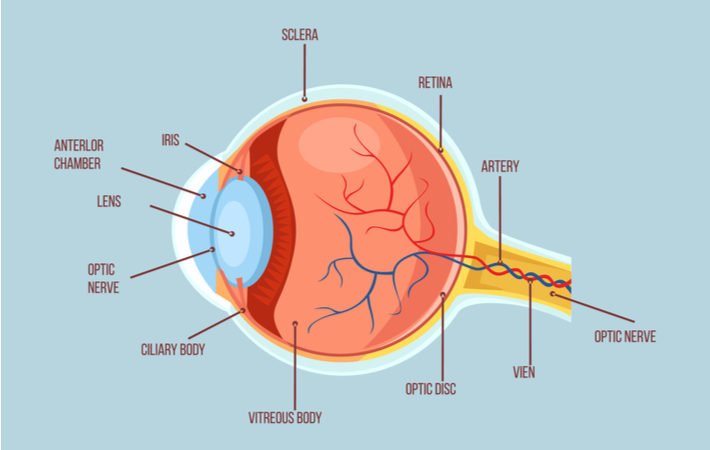Myopia, or nearsightedness, is a common vision issue for today’s kids. In fact, the World Health Organization has recorded a large spike in myopia over the recent years. This condition worsens as children get older because the refractive error grows larger as the child grows larger. As a result, children often need a very strong prescription by the time they reach adulthood.
Myopia progression can be significantly slowed down through a process called myopia control. The process essentially works by telling your child’s brain that their eyes are long enough, and they should stop growing.
Myopia control can’t reverse the nearsightedness they’ve already developed, but it can prevent it from getting significantly worse.
Here’s Why Myopia Can’t Wait
When talking to parents about myopia control for their child, I often find them hesitant to try it for one reason or another. It’s not uncommon for a parent to say, “That’s okay, we will let it get worse for now, and then correct it with surgery once they stop growing.”
I understand the logic behind this idea. But unfortunately, it’s often much more complicated than that. The first issue is that not everyone is a good candidate for laser eye surgery. Several things could prevent your child from undergoing LASIK or similar procedures in the future.
But the more pressing issue is that severe myopia can have profound eye health implications that are much worse than simple nearsightedness.
When considering treatment options for your child’s myopia, you must know the potential consequences of allowing your child’s condition to progress. Here are 5 big eye health problems that can develop as a result of myopia.

Retinal Detachments
The length of your eyeball is called the axial length. Myopia gets worse as children grow older because their axial length increases. Not only does this prevent them from seeing distant objects clearly, but it also puts tremendous strain on the retina.
The retina is a system of very delicate tissues that line the inside of your eye. The longer your eye gets, the more the retina has to stretch. If the eyeball gets too long, the retina may be unable to keep up with the strain, resulting in retinal tears or retinal detachment.
Your retinas are absolutely crucial to your ability to see; they are the parts of the eyes that detect light. If the retina becomes detached, it could lead to vision loss in that eye unless you receive immediate emergency care. It’s not uncommon for retinal detachments to develop with little-to-no warning, which may make it difficult to get the appropriate treatment in time.
Glaucoma
Glaucoma is a group of diseases that damage the optic nerve, which is responsible for sending signals from your eyes to your brain. In most cases, glaucoma develops very slowly over a long period of time, although there are cases that develop quite suddenly.
Without proper management, glaucoma can cause vision loss in the form of tunnel vision, blurry or unclear vision, difficulty discerning contrast, and seeing glare. It is one of the leading causes of irreversible vision loss.
Studies do indicate that people with high myopia (or severe nearsightedness) are 60% more likely to develop glaucoma.
Myopic Maculopathy
The macula is a small portion of your retina, which is extra light-sensitive. Your macula is responsible for your central vision, which allows you to recognize numbers, letters, and facial features.
Macular degeneration is a condition that damages the macula and causes problems with central vision. People living with macular degeneration can develop black spots or holes in their central vision, which prevents them from seeing the things in front of them properly.
There are different types of macular degeneration, one of which is specific to myopia.
We’ve already discussed how myopia increases the eye’s axial length and how too much axial length can strain the retina. But this increase in axial length can be quite harmful to the macula as well.
As the retina stretches to accommodate the size of the eyeball, the tissue at the very back of the eyeball (where the macula is located) gets very thin. Eventually, the tissue gets so thin that the macular cells start to die, limiting the eye’s ability to detect light for central vision.
Approximately 5 to 10% of people with high myopia may also develop cracks in the deeper layers of the retina. These cracks may bleed, leading to scarring around the macula and damaging macular cells even more and reducing central vision.
Cataracts
Your eye’s crystalline lens is made of proteins. For most children and young adults, the proteins are evenly spaced out, allowing light to pass through and focus properly. However, as you get older, these proteins restructure, leaving less space between them.
With more proteins clustered closer together, light cannot focus properly within the eye. This condition is called cataracts.
Cataracts make it difficult to see properly and may make colors appear dull and faded.
Almost everyone will develop cataracts eventually. However, people with high myopia are more likely to develop cataracts sooner.
Scientists are not entirely sure why myopia increases the risk of cataract development. Some research indicates that the eyeball’s excessive length may prevent the lens from getting the nutrients it needs. As a result, the lens may start losing clarity.
Protect Your Child’s Eyes for the Future
For most of us, vision is our dominant sense. Your child’s myopia may not seem like a huge stumbling block today; however, without the appropriate management, it could easily spin out of control.
The best thing you can do for your child is to invest in their future by looking into your myopia control options.


